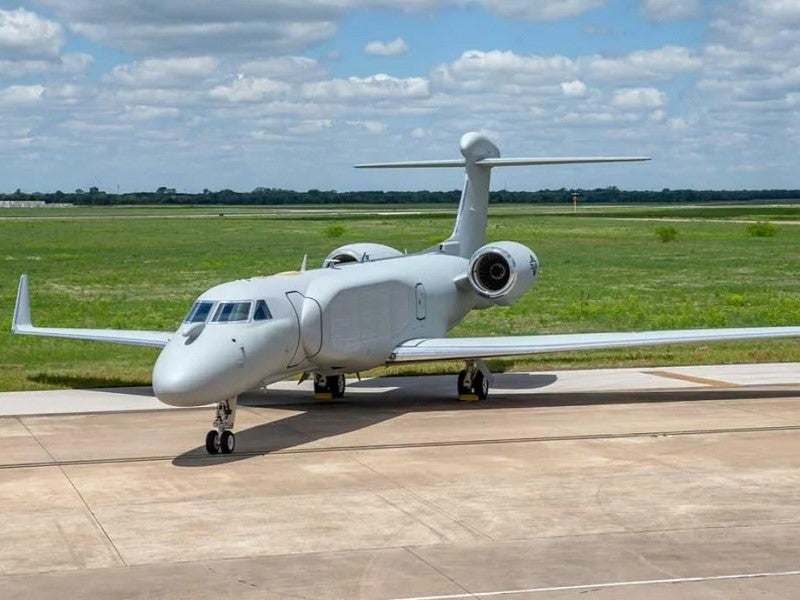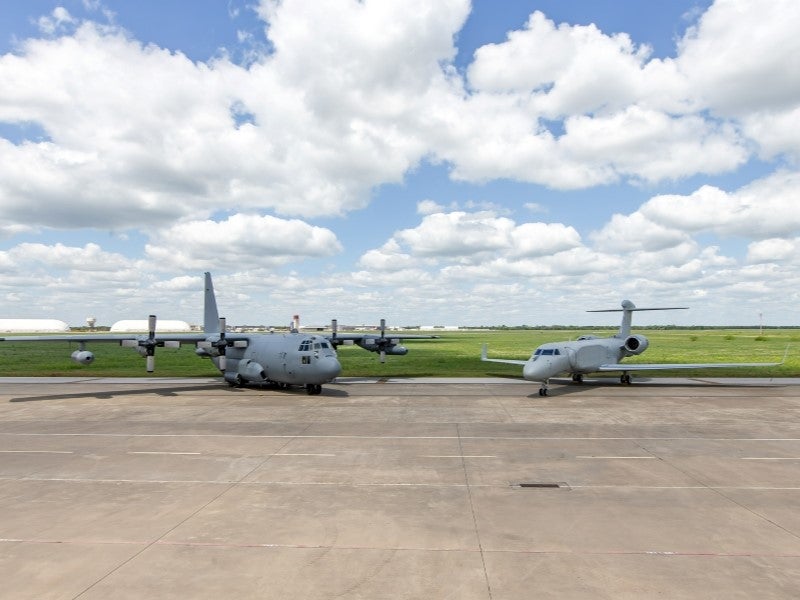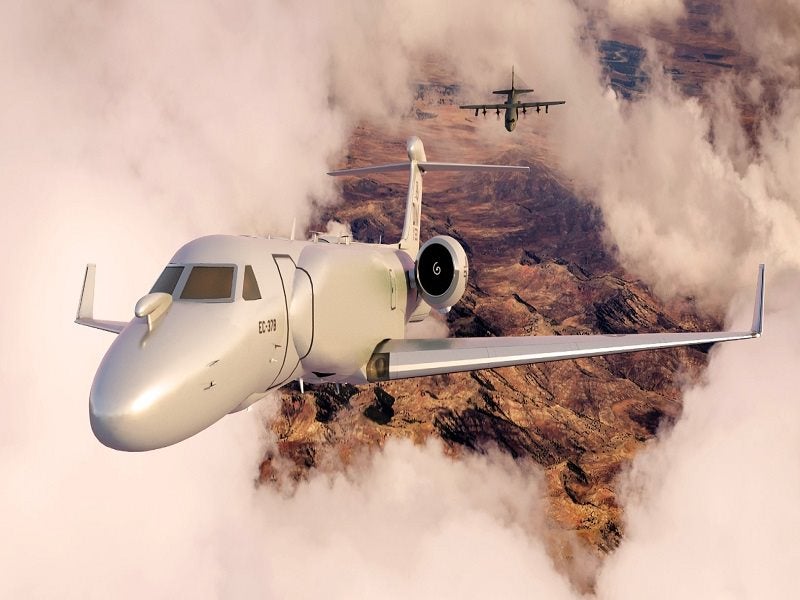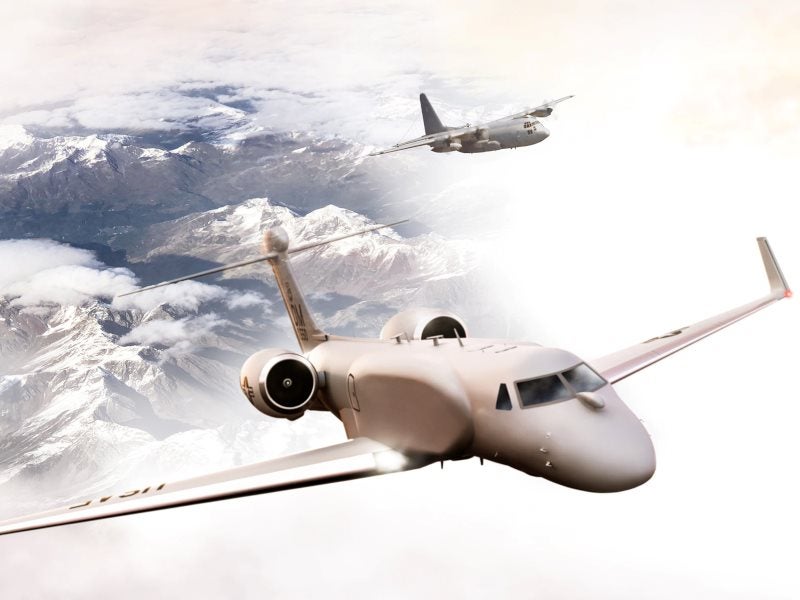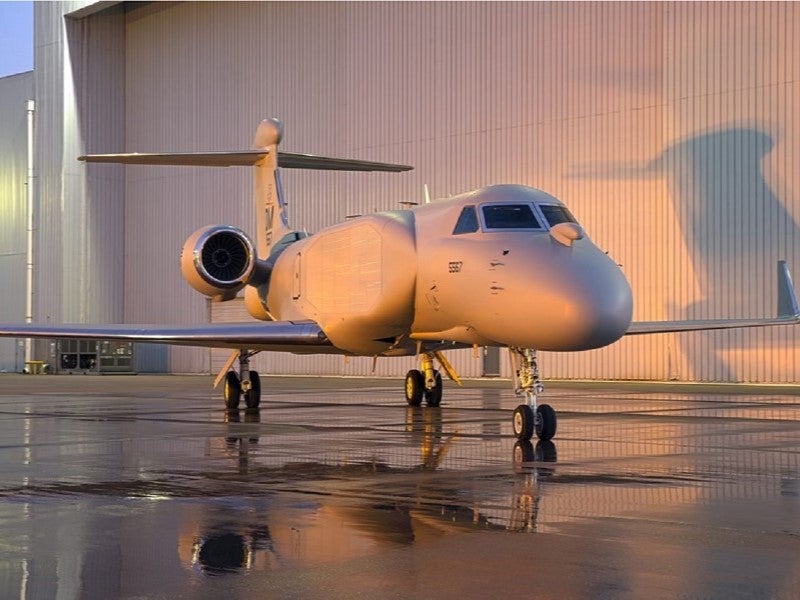The EA-37B (previously EC-37B) Compass Call electronic warfare (EW) aircraft is being developed to provide improved electronic attack capabilities for the US Air Force (USAF) based on the Gulfstream G550 commercial business jet.
The new platform is based on the Gulfstream G550 Conformal Airborne Early Warning Aircraft (CAEW) airframe, which is a derivative of the G550 business jet.
It is equipped with the existing Compass Call EW system installed on the ageing Lockheed Martin-built EC-130H Compass Call electronic attack aircraft.
The aircraft will provide enhanced stand-off jamming capability for the USAF compared to the existing EC-130H Compass Call, which has been operational with the USAF since 1982.
The USAF plans to acquire ten EA-37B Compass Call aircraft to replace the 14-aircraft EC-130H fleet.
The first EA-37B aircraft was delivered to the USAF in September 2023 for developmental and operational testing.
In November 2023, the USAF’s Air Combat Command redesignated the EC-37B to EA-37B with effect from October 2023.
The EA-37B Compass Call aircraft will be delivered to the 55th Electronic Combat Group (ECG) located at Davis-Monthan Air Force Base in Tucson, Arizona.
The 55th ECG will be the Compass Call aircraft’s sole operator for contingency operations globally.
The initial operating capability of the aircraft is expected to be achieved in 2026.
Design, features, and avionics of EA-37B Compass Call EW aircraft
The EA-37B aircraft has a length of 29.4m, a height of 7.9m and a wingspan of 28.5m. The aircraft’s weight and operating costs are reduced by 50% each, compared to the EC-130H Compass Call.
The aircraft’s weight is 48,300lb and maximum take-off weight is 91,000lb. It can achieve a speed of Mach 0.82, has a range of 4,410nm and a service ceiling of 45,000ft.
EA-37B can accommodate two pilots along with a crew of up to seven.
It is integrated with the modern Compass Call airborne tactical weapon system, which delivers high-mission effectiveness while ensuring the survivability of the pilots and operators.
Avionics aboard the new platform include an advanced flight deck, modern electronics and communications suite, jamming equipment, data link, tactical radios, as well as transmitting and receiving antennas.
The aircraft is powered by two Rolls-Royce BR710 C4-11 engines, which can generate a thrust of 15,385lb each.
EA-37B Compass Call EW aircraft development
The USAF announced its proposal to retire the existing fleet of EC-130H Compass Call aircraft from its service in 2014.
The National Defence Authorisation Act for the 2016 fiscal year directed the USAF for a report on the recapitalisation of the EC-130H Compass Call fleet to address future threats, either through a replacement programme or by installing Compass Call capabilities onto an existing platform.
The USAF issued a request for information to aircraft manufacturers regarding their ability to provide commercial derivative aircraft integrated with the Compass Call system in October 2015.
In early 2016, the USAF concluded that the future EW capability could be addressed by moving the existing Compass Call mission system onto a commercial derivative aircraft, based on the responses submitted by Boeing, Bombardier, and Gulfstream Aerospace.
The USAF issued a classified justification and approval to award the sole-source contract for the Compass Call re-host to L3Harris Technologies, previously known as L3 Communications, in August 2016.
It unveiled plans for the EC-X Compass Call replacement aircraft, under the Compass Call Cross Deck programme, in 2017.
L3Harris was awarded a contract by the USAF in April 2017 to serve as the prime contractor for the integration of Compass Call EW technology into the Gulfstream G550 CAEW airframe. Gulfstream Aerospace was preferred to supply Gulfstream G550 CAEW airframes in September 2017.
BAE Systems is responsible for the development, procurement, production, and integration of electronics and mission equipment for the EA-37B Compass Call EW aircraft fleet.
The initial design review of the Compass Call weapon system was completed in 2017 and the work to transition Compass Call EW technology from EC-130H aircraft to the modern platform began in July 2018.
In February 2024, BAE Systems announced that it will provide advanced EW mission systems for aircraft seven to ten.
Flight test details
L3Harris announced the completion of the first flight of the Compass Call aircraft in October 2021. BAE Systems in partnership with the USAF successfully flight-tested the Small Adaptive Bank of Electronic Resources (SABER) technology for the EA-37B Compass Call in April 2021.
The tests were conducted at the Davis Monthan Air Force Base in Arizona.
In December 2021, the USAF and BAE Systems collaborated to install the advanced Compass Call EW system onto the EA-37B aircraft, as part of the upgrade for the Baseline 4 platform.
The USAF Compass Call Test Team and BAE Systems flight tested three third-party software applications using the SABER technology in May 2022.
BAE Systems completed the design, testing, and delivery of key parts of the first EA-37B Compass Call aircraft in September 2022.
The integration of EA-37B was completed by L3Harris in March 2023. L3Harris completed the maiden flight of the missionised EA-37B aircraft in May 2023.
System configuration
The first five EA-37B aircraft will be equipped with the Compass Call Baseline 3 configuration while the subsequent five aircraft will be installed with the Baseline 4 package.
The Baseline 3 package provides more electronic warfare capabilities compared to the package installed in the EC-130H Compass Call aircraft.
Baseline 4, which provides more improvements compared to Baseline 3, will introduce an open system architecture with the help of the SABER technology.
The open system architecture will provide the flexibility to integrate the latest technologies through software updates and system upgrades in the future to tackle emerging threats.
EA-37B Compass Call mission capabilities
The new EA-37B EW platform will be used to disrupt enemy command and control communications and suppress air defence networks of enemy forces.
It will also be used to attack enemy early warning and acquisition radar threats and perform counter-information operations.
The new EW aircraft will have the ability to operate at high altitudes with increased speeds and execute missions at long ranges. It will also be able to perform missions in anti-access, area-denial, and irregular warfare conditions.
The aircraft will provide modern digital signal processing capabilities, which will prove useful during advanced missions.
SABER technology
The SABER technology switches the earlier hardware-based EW system into a software-based electromagnetic spectrum warfare capability for the EA-37B Compass Call.
It comprises a number of software-defined radios. The system features an open architecture and supports the EA-37B aircraft’s operating system.
SABER will allow future upgrades without the need for any major reconfiguration of the systems.
Contractors involved
In October 2023, Textron Systems was awarded a $17m contract by BAE Systems to provide a training system for the EA-37B aircraft in the Baseline 4 configuration.
The Compass Call Mission Crew Simulator training system will enable the crew to train in a simulated tactical environment.
Textron previously received a $6m contract from BAE Systems for phase one of the programme.

